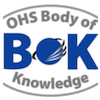Chapter 33: Models of Causation - Health Determinants
Abstract
Health is a state with both negative and positive dimensions; it extends beyond the absence of diseases and disorders to encompass personal wellbeing more generally. Its determinants are diverse and not confined to workplace hazard exposures, so identifying and managing the main work-related influences on health can be difficult. Models of occupational health causation range from macro-level conceptions, which include determinants external to the workplace but are insufficiently detailed to guide workplace risk management, through to evidence-based models depicting the work-related causes of a particular disease or disorder. An understanding of the latter type of causal model is particularly important to enable effective risk management of diseases and health disorders that have multiple and potentially interacting hazards (e.g. musculoskeletal disorders, mental disorders, cardiovascular diseases).
Keywords: health, illness, disease, causation, work
First year of publication: 2012
Current Version Pending Review: 2012
Chapter 33: Models of Causation - Health Determinants
Table of contents
| 1 | Introduction |
| 2 | Historical overview |
| 3 | Understanding the determinants of occupational health outcomes |
| 3.1 | ‘Causation’ and work-relatedness |
| 3.2 | Macro-level models of occupational health determinants |
| 3.3 | Hazard-specific diseases and disorders |
| 3.4 | Diseases and disorders with multiple determinants |
| 3.5 | Workplace benefits and determinants of positive wellbeing |
| 4 | Implications for OHS practice |
| 4.1 | Management of risk for diseases/disorders with multiple, diverse causes |
| 4.2 | Management of risk from psychosocial hazards |
| 4.3 | Workplace health promotion |
| 4.4 | Professional roles |
| 5 | Summary |
| Key authors and thinkers | |
| Acknowledgement | |
| References |
Wendy Macdonald BSc(Hons)Psych, G.DipPsych, PhD, MHFESA, MICOH, FSIA, FIEA
Associate Professor, Centre for Ergonomics and Human Factors, Faculty of Health Sciences, La Trobe University
Wendy is a highly experienced OHS educator, researcher and consultant, and a road safety researcher. Her OHS research interests include: workplace management strategies to reduce the risk of musculoskeletal injuries and disorders; impacts of workload on occupational stress and wellbeing; issues related to workforce ageing; and OHS in industrially developing countries. She plays a leading role within the World Health Organisation (WHO) global network of Collaborating Centres in Occupational Health, of which her own Centre is a member. On behalf of the International Ergonomics Association (IEA) she is responsible for liaison between the IEA and the WHO network.
Peer reviewer
Professor Niki Ellis MBBS, AFOEM, AFPHM
Chief Executive Officer Institute of Safety, Compensation and Recovery Research, Monash University
Learning Outcomes: Models of Causation: Health Determinants
The OHS Body of Knowledge takes a conceptual approach which enables it to be applied in different contexts and frameworks.
To optimise its value for education and professional development learning outcomes have been developed for each technical chapter in the Body of Knowledge.
The learning outcomes as described give an indication of what should be the capabilities of an OHS professional; it is up to those developing OHS education programs, OHS professionals planning their CPD or recruiters or employers selecting or developing people for the OHS function to consider the required breadth vs. depth .
Please read the section on using the learning outcomes before delving into the leaning outcomes of the individual chapters.
The numbers against each learning outcome refer to the chapter number of the BOK download page. No learning outcomes have been developed for the chapters considered introductory or underpinning knowledge (that is chapters 1, 2, 3, 4, 5, 6, 7, 1, .13, 14, 15.)

